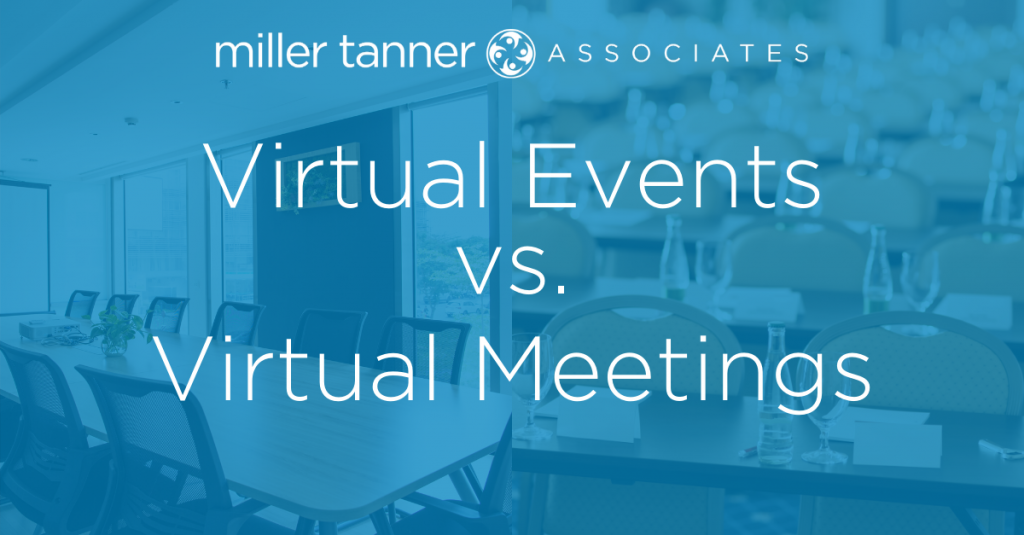
With every crisis comes opportunity. For the event industry, the opportunity is the ability to pivot to successfully produce virtual meetings and virtual events. In today’s market, virtual solutions have become the only event option available and the event industry has shifted to meet the demand.
Since 2010 Miller Tanner Associates (MTA) has been planning virtual meetings and in 2016, MTA started producing successful virtual events. There is a distinction between meetings and events, and it’s helpful to understand the differences and similarities.
Virtual Meetings Versus Virtual Events
Virtual Meetings
A virtual meeting is a virtual screen-to-screen (S2S) gathering of remote attendees gathered to listen to a speaker present on a certain topic, receive training, and/or meet to collaborate. Usually less than 4 hours in length (3 hours is preferred for maximum audience engagement), a virtual meeting is considered a basic virtual format type:
- Require basic production efforts
- Have a smaller in size audience
- Rely upon standard virtual platform features such as polling for content engagement
Virtual Events
Conversely, a virtual event contains the same basic structure of a virtual meeting – a S2S gathering of remote attendees – however, the agenda and the technology involved are much more complex. Virtual events are designed to create an experience, not only to deliver a message. There is more leadership effort in connecting with the virtual audience on a multitude of different levels. Their agendas can provide virtual options over several days and they usually involve the use of multiple virtual platform features such as:
- Breakout rooms
- Simultaneous interpretation
- Whiteboarding
- Wellness breaks
- Surveys
- Matchmaking sessions
- Other interactive options that connect the audience with the messaging
How Virtual Meetings and Virtual Events are Similar
Foundationally for both types of S2S formats to be successful, they must utilize a virtual platform that offers the features needed to achieve their messaging goal. The market has many virtual platform options, in which to choose and each has value. The trick is knowing the market’s virtual platform options/features and being able to successfully utilize them for either a meeting or an event.
Additionally, both virtual meetings and virtual events require:
- Redundancy in their systems (backup plans to address internet fluctuation).
- An informed designer (a talent that knows how to help speakers present virtually and knows the virtual platform marketplace).
- Experienced technician (someone that can technically produce the use of the virtual platform features).
- Focused, professional approach to create any successful group gathering.
The event format type may have shifted, but the end goals remain the same – to have a successful meeting or event. You are investing in bringing everyone together for a reason and you should successfully accomplish your goal.
When planned with a knowledgeable and talented team either a virtual meeting or a virtual event should achieve your results. The event industry’s opportunity is to be able to pivot from a face-to-face event format to a 100% virtual platform format and still be able to produce exceptional results.
Contact our team to help you design the right virtual solution for your event goals.
